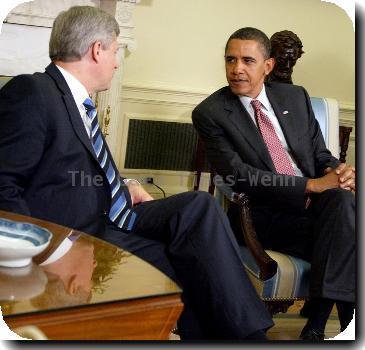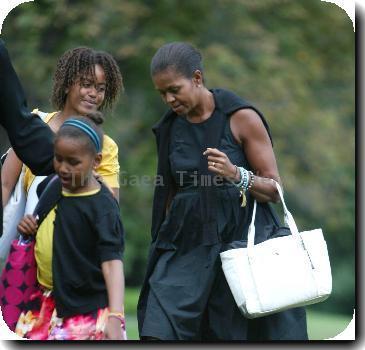Big new US deployment to Afghanistan could take nearly a year, not six months, general says
By Anne Gearan, APMonday, December 14, 2009
Afghan troop surge will take a little longer
KABUL — The military may not finish its surge of 30,000 American troops to Afghanistan until nearly a year from now, a senior U.S. commander said Monday — a slower pace than President Barack Obama has described. The White House insisted it was sticking with a goal of completing the buildup by late summer.
The reinforcements begin arriving next week, and the bulk of the troops are scheduled to be in Afghanistan by the end of summer. But it will probably be nine to 11 months before all the troops are in place, Lt. Gen. David Rodriguez said.
The timing is important. The sooner the full complement of 30,000 can get there, the sooner the added firepower might have an effect on turning around the war and creating conditions that will allow the Pentagon to proceed with Obama’s promise to begin withdrawing troops in July 2011.
“We’re still working the speed at which they can come in, and so we’ll see how much faster that they can come in,” said Rodriguez, the second-highest U.S. commander in Afghanistan.
Military officials had been hinting in recent weeks that the escalation might take slightly longer than the summer goal, suggesting the administration’s announcement of such a rapid escalation might not be entirely firm. Rodriguez’s comments on Monday set off a flurry of reactions both at the White House and the Pentagon.
White House spokesman Robert Gibbs said Obama still “believes we should get our troops in there by the end of the summer.”
Several defense officials provided a similar timeline Monday, saying Defense Secretary Robert Gates has indicated that the all of the troops should be in place by summer’s end.
Pentagon spokesman Geoff Morrell said Gates has made it clear that the majority of U.S. forces were slated for arrival by midsummer and the rest by the end of summer. “That is going to be a real challenge logistically, but we are determined to meet it,” he said.
The sticking point appears to be over how quickly the military can deploy a final brigade of troops — containing between 4,000 and 5,000 soldiers, officials said. Adm. Mike Mullen, chairman of the Joint Chiefs of Staff, told Congress last week that 20,000 to 25,000 troops could be in place by the end of summer.
Rodriguez said the calendar for adding forces is tied to the logistical challenges the military faces in bringing in so many forces so quickly. It is a complex effort to arrange for the barracks, equipment and tons of other supplies that enable incoming soldiers and Marines to perform their mission. Some will move to Afghanistan from the U.S; some materiel will be shifted from Iraq or Kuwait, which serves as a staging area for the Iraq war.
Afghanistan is logistically tougher than Iraq, in terms of a troop buildup, because it is landlocked and lacks the more extensive network of highways that proved valuable in the 2007 Iraq buildup.
Rodriguez said the rapid influx is a central part of the plan to take total U.S. forces to 100,000 next year, and there is a a heavy focus on finding ways to speed the deployment.
“It’s a lot of things that have to line up perfectly … to get where we want to go as fast as we want,” Rodriguez said. “So it’ll be plus or minus a month or two.”
Obama has not cited a detailed timeline. In his Dec. 1 nationally televised speech, he said the fresh troops would “deploy in the first part of 2010 — the fastest pace possible — so that they can target the insurgency.”
White House aides had indicated the hope was for all the new troops to be in place by summer, and Gibbs said Monday that is still the operative plan.
“I would point you to the remarks that Secretary Gates and others made in testifying in front of Congress that the bulk of our forces would be in by the beginning of the summer and that the remainder would be in by the end of the summer,” Gibbs said.
The apparent discrepancy isn’t large — a couple of months or more — but the calendar Rodriguez suggested is close to the one his boss, top U.S. Gen. Stanley McChrystal, proposed months ago during the long deliberations about how to expand forces to take on a resurgent Taliban. Obama wanted to speed up the process as much as possible in part to send a signal of U.S. resolve.
Meanwhile, the deaths of 16 Afghan policemen Monday was a reminder of the difficulties awaiting the Obama plan to quickly train Afghan forces to take over the fight. An attack that killed eight policemen in the Taliban stronghold of Helmand province may have been an inside job, a provincial spokesman suggested.
“We don’t underestimate the challenges particularly on the police side,” Mullen, the Joint Chiefs chairman, said at a press conference shortly after arriving in Afghanistan for a check on preparations for the new forces.
Mullen, the top U.S. military officer, said he had discussed police recruitment and training with Afghanistan’s ministers of defense and interior, and he praised Interior Minister Mohammad Atmar, a favorite of Washington, for addressing police corruption.
Mullen is touring U.S. outposts and will also travel to Pakistan.
Associated Press writers Deb Riechmann and Amir Shah in Kabul and Anne Flaherty and Robert Burns in Washington contributed to this story.
Tags: Afghanistan, Asia, Barack Obama, Central Asia, District Of Columbia, Iraq, Kabul, Middle East, North America, Target, Troop Deployments, United States

